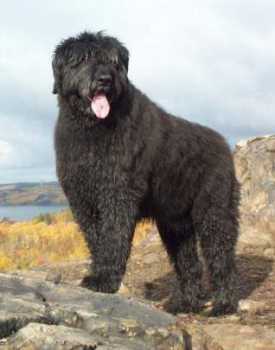The Dogue de Bordeaux is similar to the Bull-mastiff in size and type, yet is centuries older, being more closely related to the mastiff from Asia and the molossus that made the trek to Gaul from the Roman arenas. At one time, there were two varieties, the Doguin being the smaller version, which has since vanished into nothing but a sentence in reference books. Dogues have had wide and varied employment since their entrance into France after the fall of Rome. Originally, they served a dual purpose as war dogs and by guarding flocks from wolves and bears.
This was followed by the "glory" of combat with bears and bulls. After humane statutes outlawed the torture of the larger beasts, battles of Dogue against Dogue took the place of dog against bull. Spectators felt the French dog fights rivaled the bullfights in Spain for entertainment purposes. Occasionally, a dull match was sparked by tossing a jaguar in the pit.
This lack of concern for dogs and, in particular, for the Dogue de Bordeaux was written in the 1300s by Gaston Phoebus: ". . . with their thick heads, thick lips, and large ears, they are well suited to hunting bear and pigs because they are stubborn. But they are heavy and ugly and, if a wild boar were to kill them, it would be no great loss."
Following this era, near the end of the Middle Ages, the gladiator turned to cattle droving— not as "glorious" perhaps, but much safer. The breed served as personal protection when fighting was outlawed and the need for cattle drovers declined. His majestic presence decorated many estates. The French Revolution ended that occu- pation, with many of the noble guards giving their lives to protect their masters and property. Fortunately, enough survived to attract the attention of current French cynologists, and the Dogue is now found throughout France, with specimens also in Belgium, Germany, Switzerland, Japan, Africa and the States.
Professor Raymond Triquet headed the rebuilding of the breed during the mid-1960s and stressed that the dogs should be "superb athletes." The massive head is their trademark, with the jaw undershot and the muzzle masked in either black or red.
"Beauty is only skin deep" and despite the dogs' menacing appearance, they are sweet with their masters and children. They will, however, be aggressive with other dogs. The French expression humeur de dogue still refers to a person showing a bad temper.
Breeds navigation
Looking for the source of custom dog collar ? Please click here to see exclusive items
Need high quality and well priced custom dog collar? Here you can find some
|

